
During our 2017 trip to Japan, we had fallen in love with the “onsen experience”, so this time, we decided to repeat it in a few different places. The first place where we did so this time around was in Shuzenji Onsen.
Shuzenji Onsen is one of the oldest and most famous hot spring resort towns on the Izu Peninsula, just a couple of hours by train from Tokyo.
SIGHTSEEING
Shuzenji Onsen is located in the hilly centre of the peninsula and even though it lacks the ocean views of many nearby onsen towns, it attracts visitors with its history and beautiful setting.

Shuzenji Temple
Shuzenji Temple is the biggest temple in town. Kobo Daishi, one of Japan’s most important religious personalities, founded the temple about 1200 years ago. Today, it is a Zen Buddhist temple where visitors can participate in meditation classes (Tuesdays from 9:30, reservation required).


It is also known as the temple where Minamoto-no Yoriie, the second shogun of the Kamakura Era, was imprisoned.

Tokko-no-yu
Shuzenji’s most prominent hot spring, Tokko-no-yu, is located in the middle of the river bed that runs through the town centre.

The name (iron club) derives from the legend according to which the waters sprang from a rock that the Buddhist priest Kobo Daishi struck with an iron club, about 1200 years ago. Today, Tokko-no-yu is used as a foot bath.
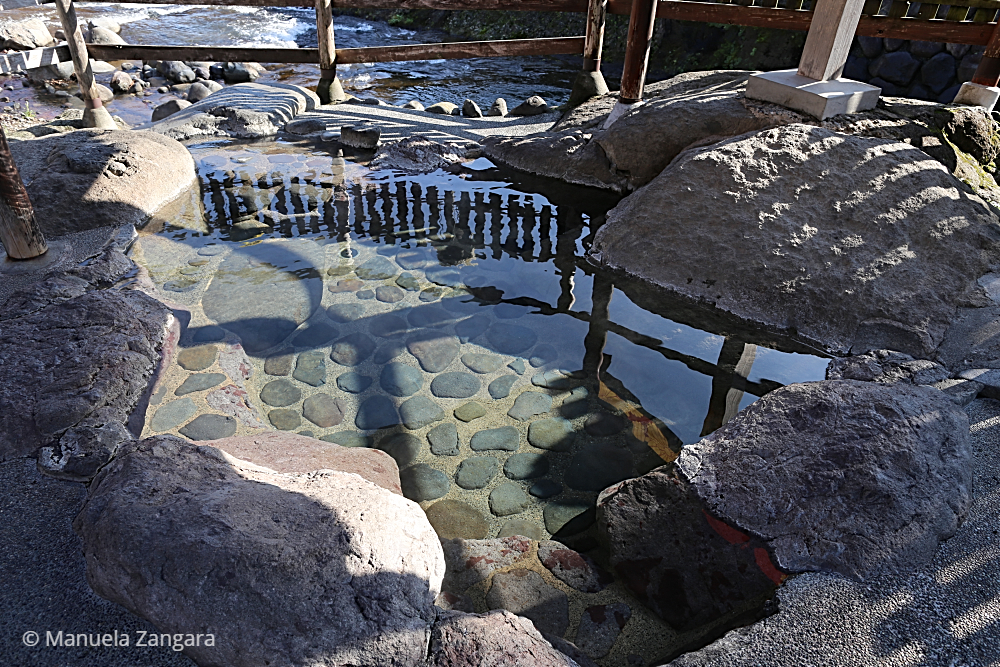
Hie Jinja Shrine
Hie Jinja Shrine was also set up by Kobo Daishi at the same time he established Shuzen-ji Temple. Although Hie Jinja doesn’t have a big precinct, huge trees are scattered about and show its sacredness. Two cedar trees attached together at their roots are a symbol of the blessing of children. The trees are more than 800 years old and decorated with holy straw ropes. Go through between the trees, making a wish about your children, and then you and they will be blessed.

Grave of Minamoto-no Yoriie
Minamoto-no Yoriie, the second shogun of the Kamakura Era, was very smart, but such brightness invited discord with the Hojo family. He was executed at the premature age of twenty-three, after being imprisoned in Shuzenji Temple.
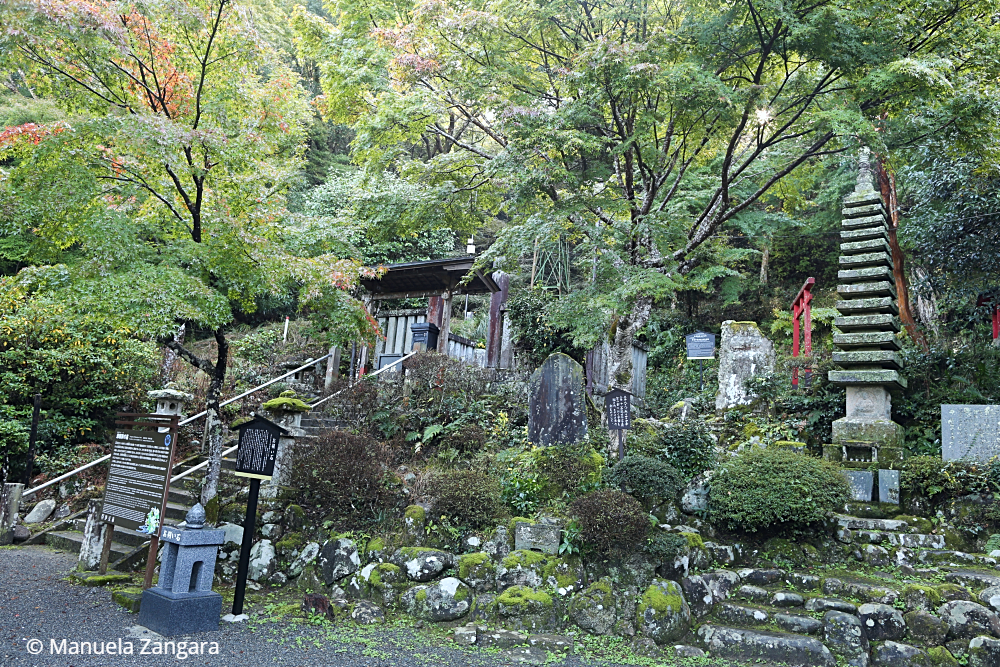
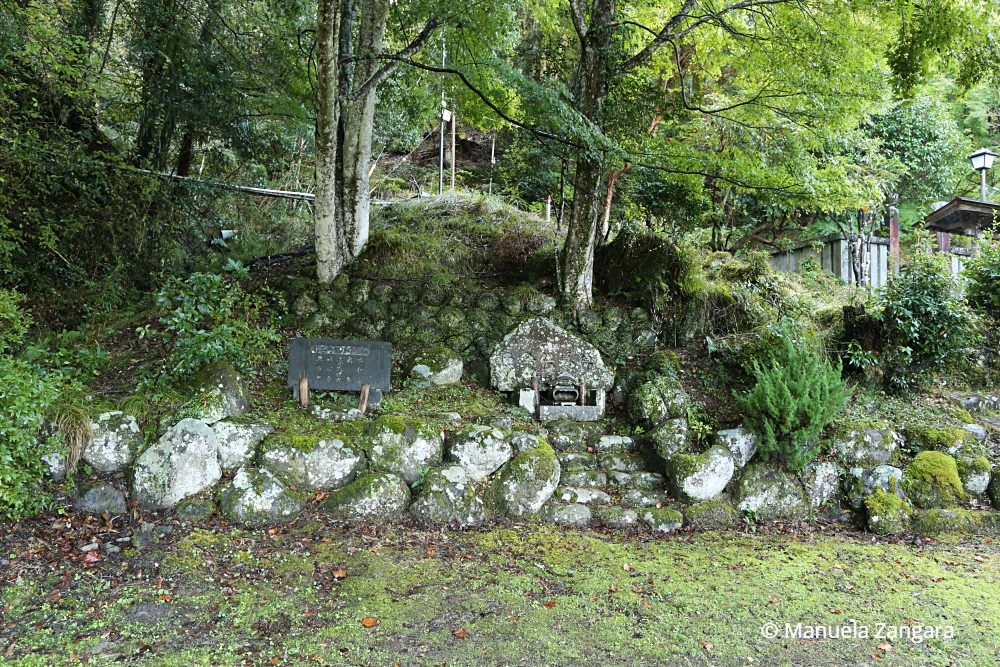
Chikurin-no Komichi/Bamboo forest path
This path meanders along the Katsura River for 400 meters from the Katsura Bridge past the Kaede Bridge to the Takishita Bridge.
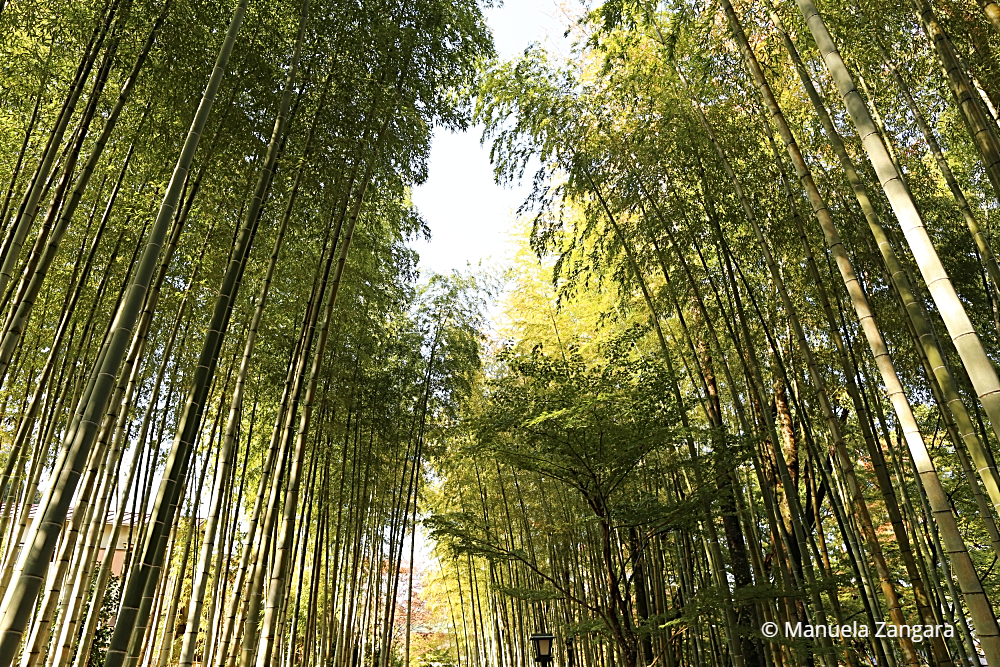
The contrast between the bamboo groves, the blue sky and the red bridges evokes the beautiful Japanese scenery we all dream of!


Kaede Bridge and Katsura Bridge
Beautiful vermillion bridges on the Katsura river.

Kawara Yu
Kawara Yu is a foot bath opposite Tokko-no-yu
Hakoyu
This hot spring with an eye-catching 12-metre high belvedere was established in 2000 as a facility for day trips. Relax and enjoy Shuzenji’s waters in a tub made of fragrant cypress.
Mt. Fuji
From the top of Mt. Daruma in Shuzenji, you can admire the imposing figure of Mt. Fuji flanked by the Minami Alps on the left and the Hakone Mountains on the right, with Suruga Bay in the foreground.
To see it though, you need to go to Darumayama Kogen Resthouse – you can catch the bus directly from Shuzenji Station.
We did not go, as it was pouring cats and dogs, so we wouldn’t have been able to see anything!
We did, however, see Fuji-san from Mishima station when waiting for the Shinkansen that would take us to Osaka. Isn’t it breathtaking?

FOOD
KAISEKI DINNER
If staying in Shuzenji Onsen, I highly recommend you stay in a ryokan – a Japanese style hotel. This is the perfect place to experience the onsen and, above all, a kaiseki dinner – a traditional multi-course Japanese dinner. It balances the taste, texture, appearance, and colours of food. Only fresh seasonal (and often local) ingredients are used and are prepared in ways that aim to enhance their flavour. The finished dishes are carefully presented on plates chosen to enhance both the appearance and the seasonal theme of the meal. The garnishes are beautiful too and they are often made with real leaves and flowers. It is an amazing experience both for your palate and your eyes.
Shuzenji Onsen is famous for its fresh wasabi, so they brought us the full piece so we could grate it ourselves and eat as much as we wanted. It tastes so much better than the bottled/packaged one. It is more delicate in flavour.

The dinner is not served in your room, but you have a private room in the restaurant area.


We had a starter: Orange Liqueur, Seaweed in Vinegar, Sea Cucumber (one of the few things I cannot bring myself to like!), Pork and Vegetables, Gingko Nuts, Sushi with some sort of pickled vegetable, something made with Sweet Potato flour and shaped like a flower, and a mochi-like “persimmon” filled with adzuki paste. All decorated with beautiful momiji/maple leaves.
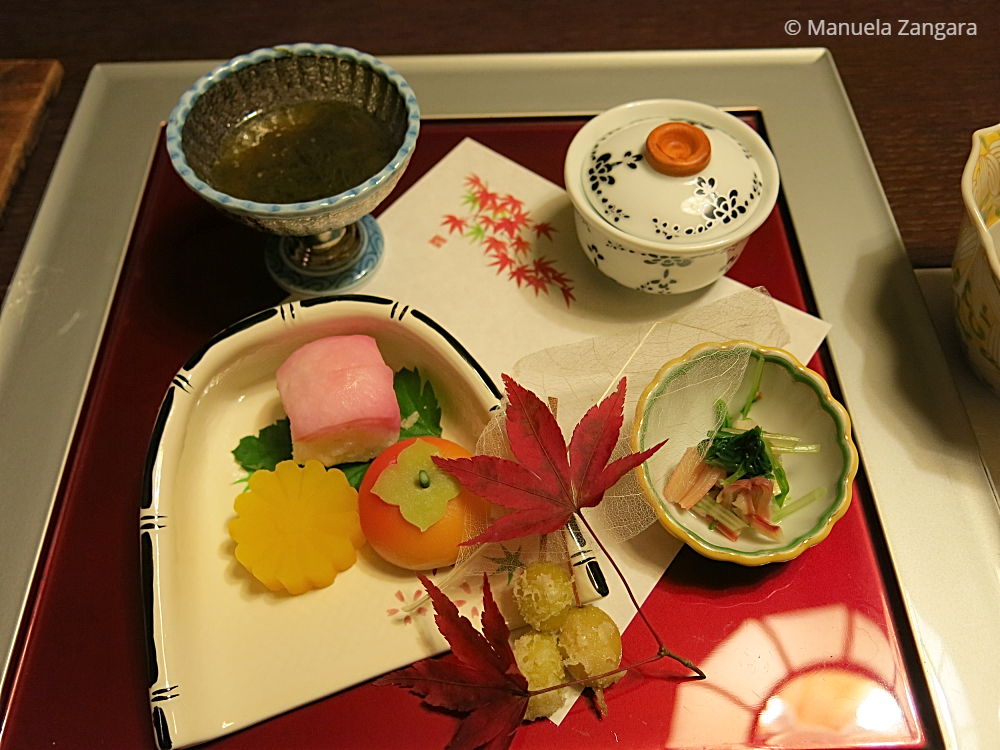



There was also a slightly smoked fish jelly.

And a mushroom and tofu soup served with yuzu. Yum!
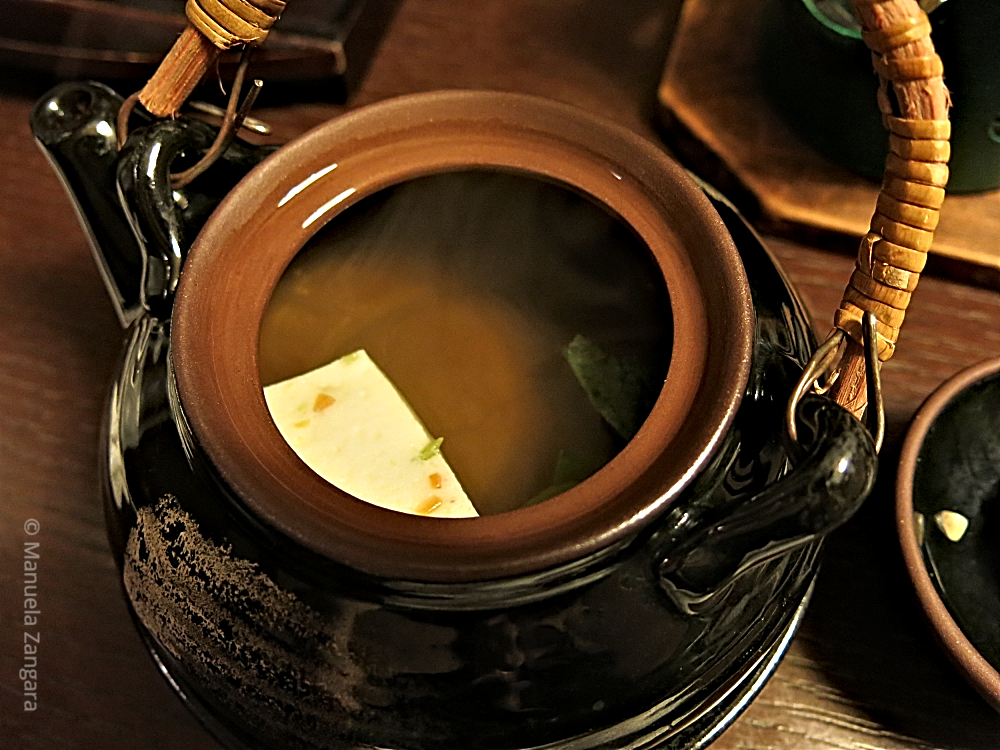
The showstopper for me was the sashimi: snapper, mackerel, and the most amazing tuna! With fresh wasabi, obviously!

We also had broiled fish.

Then my husband had Beef Stew with some sort of pasta (!).
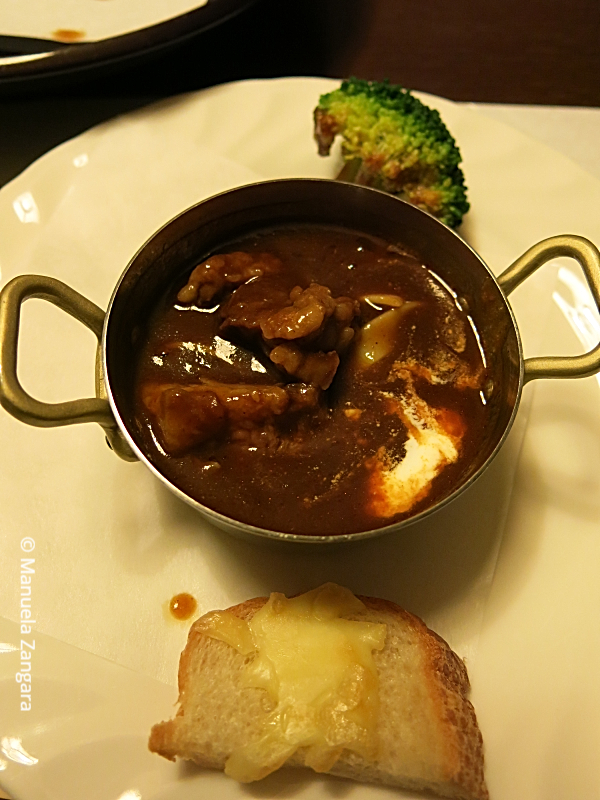
And I had Salmon with béchamel sauce and vegetables.

Then we had Fish in Sweet Soy Sauce with green beans and carrots shaped like momiji! So cute!


We also had Rice with Scallops and Mushrooms, Miso Soup, and Pickles.

For dessert, we had Hojicha tea and 3 sweets: Mt. Fuji (not sure how that was made, but it looked sooo cute, my kids almost didn’t want to eat it!), Blackberry Cake, and Orange Pudding/Panna Cotta.


The kids had a HUGE dinner set that included Inari Zushi, Chicken Karaage, Chips pasta, a burger with gravy, sausages, potato salad, sashimi, and smoked duck. Plus the same dessert as us adults.

It was a pretty good dinner and beautifully presented!
BREAKFAST
Breakfast at the hotel was great too. We chose the Western-style breakfast because we find it a bit hard to eat fish and rice so early in the morning.

We had bread with extra virgin olive oil, croissants, yogurt, jam, butter, tea/coffee, and juice/milk. We also had some delicious Tamagoyaki/Japanese omelette, sausages, potatoes, and a bowl of silky pumpkin soup.

However, the showstopper for me was a Bechamel and Mushroom Croquette. SO good!

ACCOMMODATION
In Shuzenji Onsen there are plenty of ryokans to choose from. I did a lot of research and at the time of booking, my priority was to find a place with a good onsen and some nice foliage in the yard.

In the end, I booked Kikuya ryokan through Japan I can.

We loved it, however, some areas (especially the flooring) is in urgent need of some repairing. For the price you pay, it’s the least they have to do!!
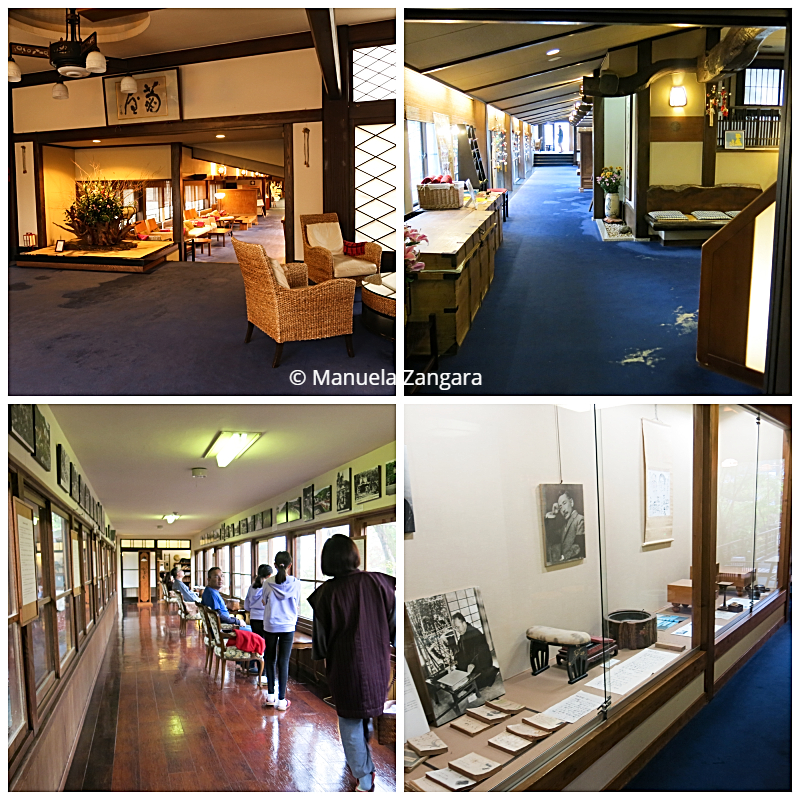
We arrived early, as we had planned to leave our stuff at the ryokan and go out to explore the town, however it was pouring so much that the moment we went out, we got completely wet… the umbrellas were completely useless! So, we came back inside.
In the beginning, we were left at the entrance… they wouldn’t let us even in the foyer where they had armchairs, tables etc. I found that so strange and very “un-Japanese”… not as welcoming as we have always been used to. Anyhow, after about 30 minutes, someone else saw us and they took us to a waiting area/bar, where we could wait, have a warm coffee (they had a good espresso machine!), milk etc. Now, that was MUCH better! We stayed there until it was time to check in.

Our room was huge and beautiful. It was almost like an apartment, as there were 2 bedrooms. When we arrived, we used part of the room as “day room”, so we had a table and we could sit around it on the tatami mat to enjoy tea and pastries provided by the ryokan management.
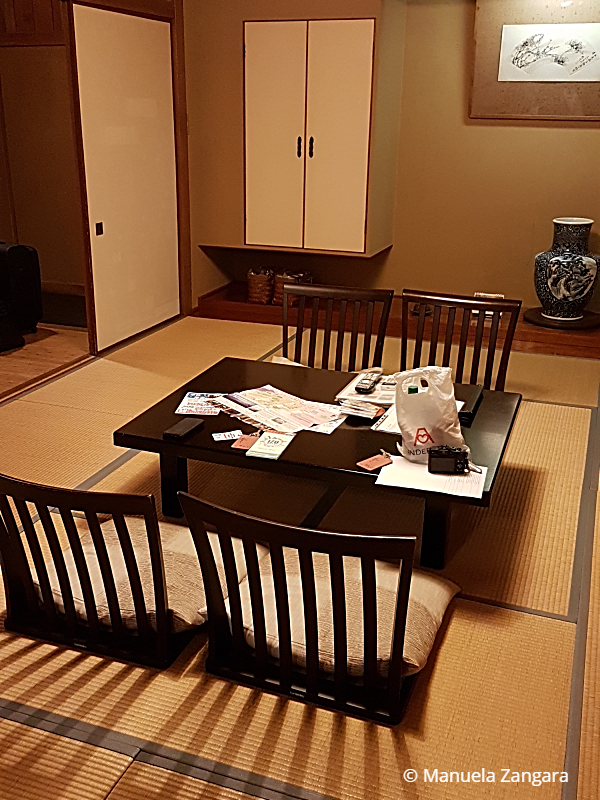
After dinner, the room was prepared for the night and the futons were laid down for the kids to sleep in.

The other room already had beds in it.

We had a beautiful veranda with a view of our own private garden!




We also had a private bathroom/toilet (shower included).

They also provide you with onsen towels, bags, and some very comfortable pajamas. They are not yukatas, but they are also traditionally Japanese. We had already used them in Matsumoto in 2017.

The ryokan is quite old and it’s all in wood. It is really pretty.

They also have a shop where you can buy clothes and some very interesting food items and sweets.

There is a nice pond with carp and some beautiful foliage in autumn.

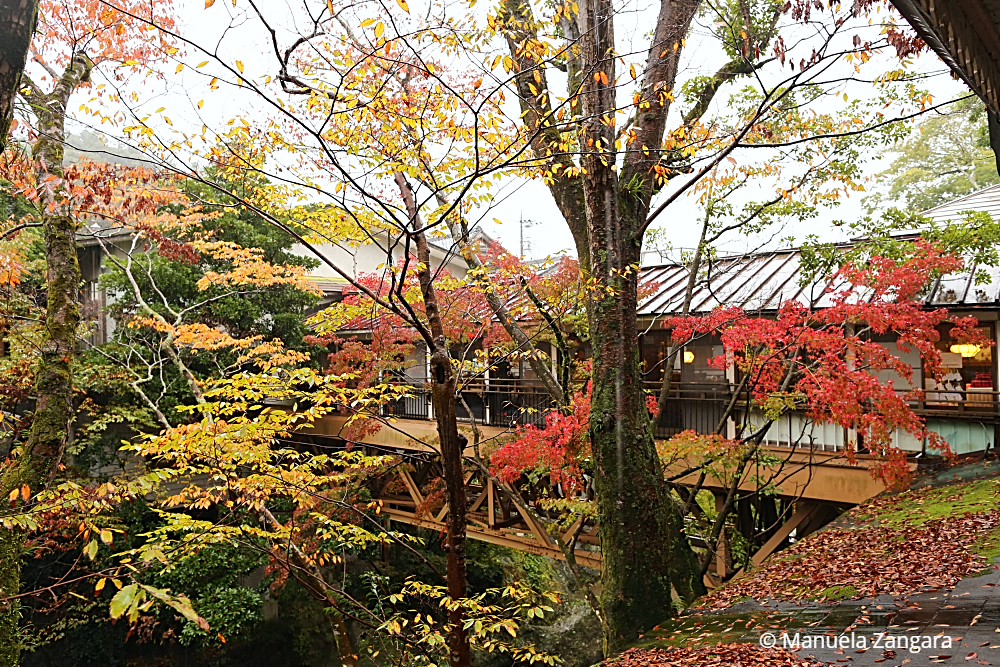

What I liked the most though was the onsen. They have an internal one and a rotomburo, outside. Both great! Pictures are not allowed for good reasons, but you can check them out on the ryokan’s website.
They also have 2 private/family open-air onsens that you can use for free. I was able to take pictures of these, before using them.
They have a hexagonal one.
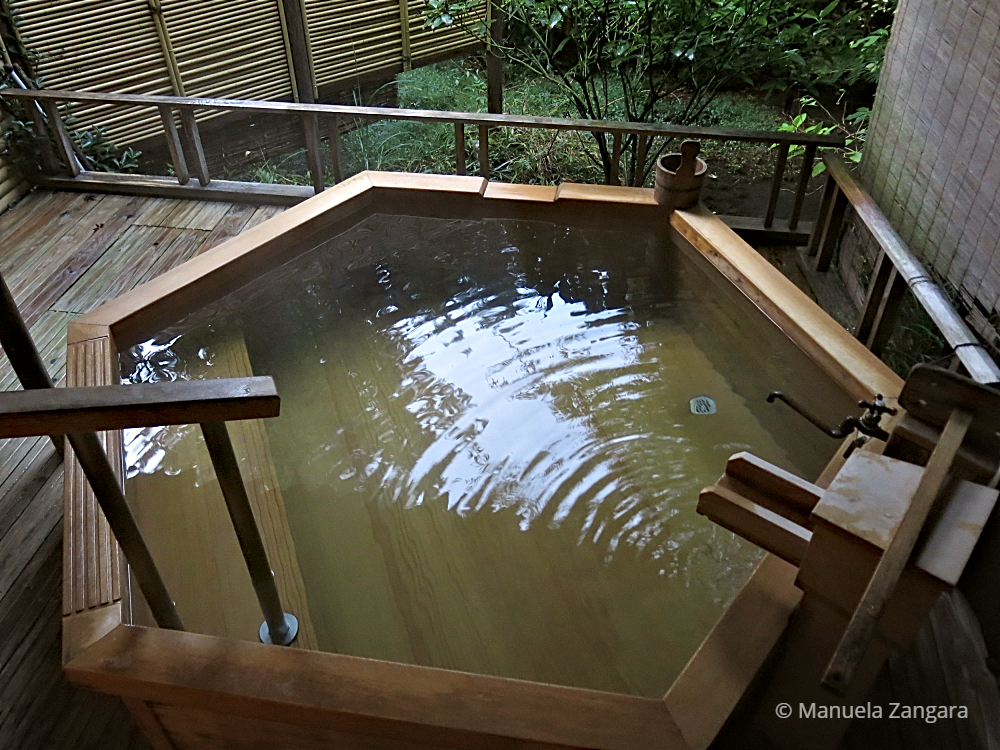
With its changing area.
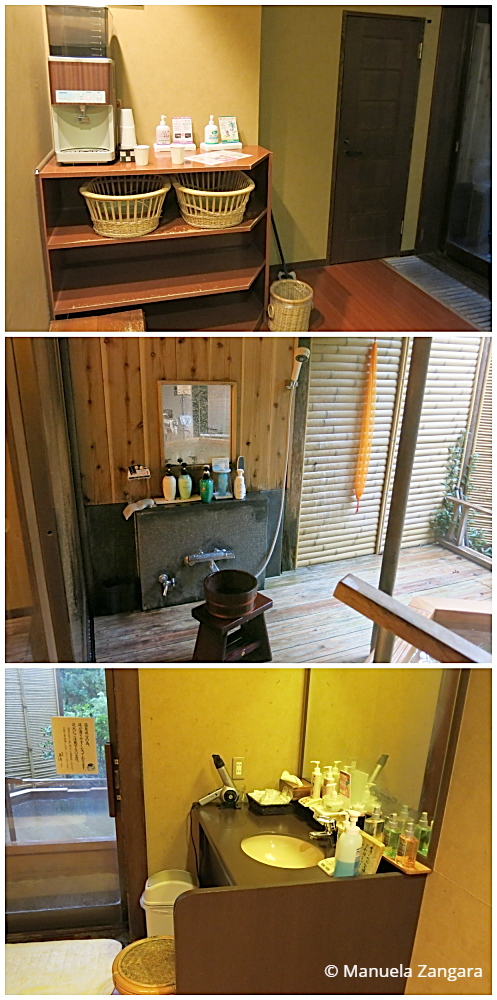
And a round one.

With its changing area.

For more information on how to take a bath at an onsen, read my post on Onsen Etiquette.
The bus from Shuzenji station stops right in front of Kikuya ryokan, so that it very convenient.
We had a great time and I highly recommend Kikuya ryokan if you go to Shuzenji Onsen!

HOW TO GET AROUND IN SHUZENJI ONSEN
Shuzenji Onsen is a compact town and can be fully explored on foot.
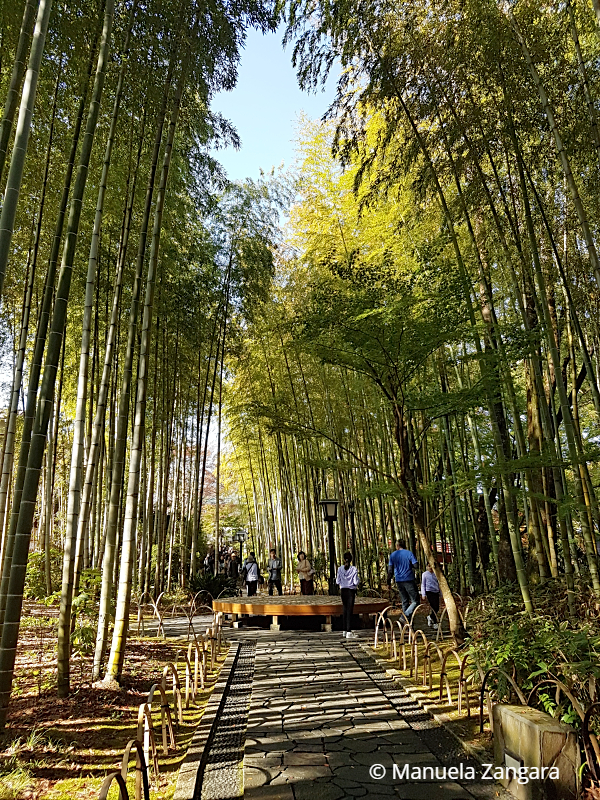
RESOURCES ON MSM
RECIPES:
TRAVEL IN JAPAN:
Nara & Fushimi Inari guide – Japan
Haru Cooking Class Kyoto – Japan Guide
Nagashima and Nabana no Sato – Japan Guide
Jigokudani Monkey Park Guide – Japan
Don’t forget to pin this post for you to plan your trip!

HOW TO GET THERE
By train – from Tokyo
Take a Shinkansen bound to Osaka and get down at Mishima Station (45-55 minutes). Take the Izuhakone Railway from Mishima Station to Shuzenji Station (30 minutes, frequent departures). The Japan Rail Pass does not cover trains between Mishima and Shuzenji.
Alternatively, there are a few direct JR limited express Odoriko trains that run all the way from Tokyo to Shuzenji (around 2 hours). This is the option we chose.
From Shuzenji Station, it is still a 5-10 minute bus or taxi ride to the hot spring town. Take a frequent bus bound for Shuzenji Onsen or Nijino Sato and get off at Shuzenji Onsen.




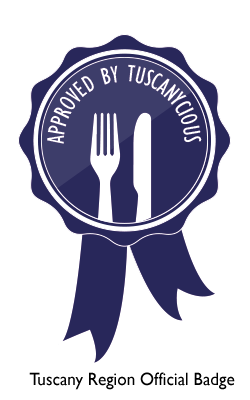












Oh, how lovely! I will be visiting Japan for the first time in April – I am so excited!
Awww I LOVE it! If you need any tips, let me know! I could talk about Japan for hours! 🙂